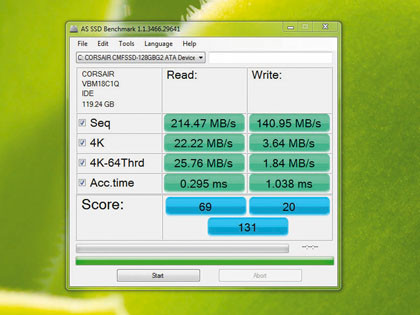Solid state drives: all you need to know
Don't waste cash on an SSD that doesn't live up to its hype
Give your SSD a TRIM
As we've explained, one of the biggest problems affecting SSD performance involves memory blocks being filled with redundant data. When the time comes to put new data in these blocks, they must first be erased before refilling. It all takes time.
And time means performance in SSD land. Now, you might think this could be easily solved by the drive itself. Just delete the frigging data in the first place, you cry. Sadly, it's not that simple. Some of this redundant data is hidden by the operating system's file system. In other words, the SSD itself doesn't actually know it's dead data until the time comes to rewrite.

SHAVE AND A HAIR CUT: TRIM – a handy disk command coming soon to a sluggish SSD near you
Clearly, an OS-level solution is required. That's exactly what's coming in the form of a new disk command known as TRIM. Due to be supported by Windows 7, though possibly in an update rather than at launch, TRIM takes into account the needs of SSDs.
Instead of just keeping the file system updated, TRIM sends a message to the drive to delete blocks as required. The downside is that deleting files can take longer, but generally it's write performance that is most critical.
Already two of the key SSD controller makers, Samsung and Indilinx, have announced their intention to support TRIM. Intel hasn't confirmed one way or the other, but we expect it to jump on-board soon enough. TRIM looks like being an essential SSD feature for the future.
Sign up for breaking news, reviews, opinion, top tech deals, and more.
Heal the pain
So, you've had your SSD for a few months and your drive has lost its pep. Its memory blocks are used and tired, write speeds are on the wane and the honeymoon period is well and truly over. Is there anything you can do?
If you own an older drive, you're out of luck. Chalk it down to experience and the cost of being an early adopter. However, with some of the latest drives, there is hope, at least in theory. Samsung's second generation SSD technology has a feature known as 'self healing'.

PROBLEM SOLVED?: 'Self healing' and 'wiping' –the solution to SSD lag or papering over the cracks?
To cut a long story short, it's claimed to be able to detect memory blocks with redundant data and then completely erase them, ready for faster rewriting. The tricky bit is that it only operates after a cold boot, following which the system must be left idle for an hour. It doesn't just happen as you go along.
Following our suite of benchmarks for our SSD group test, we tested this feature courtesy of Corsair's P128 128GB drive. It's essentially a rebadged second generation Samsung SSD.
Having cold booted the drive, we left it to idle for several hours. The time taken for the healing process to complete varies depending on how "used" the drive is. What's more, there's no way to know for sure that it's happened or if it has finished the process.
In any case, our follow-up testing did indeed reveal significant improvement. Admittedly, peak sequential read and writes didn't change much. But some of the real-world tests, such as file decompression, were as much as 30 per cent faster. It's a nice feature, we only wish it was more transparent in use.
Samsung aside, SSD memory controller Indilinx has developed a "wiper" program that does much the same job for drives using its Barefoot controller such as the OCZ Vertex and Patriot Torqx. The only difference is that it must be executed by the end user.
In our testing, it was similarly effective as Samsung's semi-automated self-healing feature. If that sounds promising, there's a catch with all these healing measures. It can take as little as a few hours for the "restored" performance of these drives to begin to noticeably drop off again.
In other words, these features are very much a temporary solution. What we want is a technology that prevents performance degradation in the first place. Here's hoping the upcoming TRIM command really delivers.
Technology and cars. Increasingly the twain shall meet. Which is handy, because Jeremy (Twitter) is addicted to both. Long-time tech journalist, former editor of iCar magazine and incumbent car guru for T3 magazine, Jeremy reckons in-car technology is about to go thermonuclear. No, not exploding cars. That would be silly. And dangerous. But rather an explosive period of unprecedented innovation. Enjoy the ride.